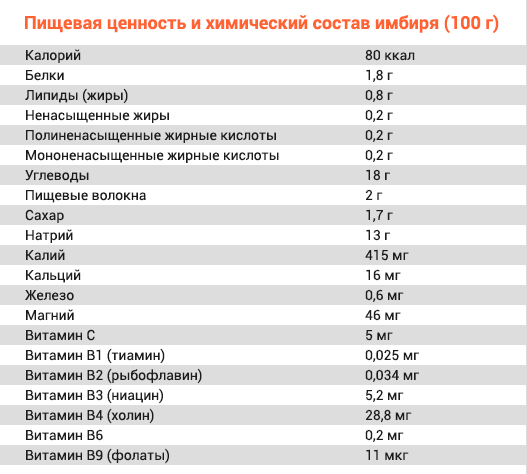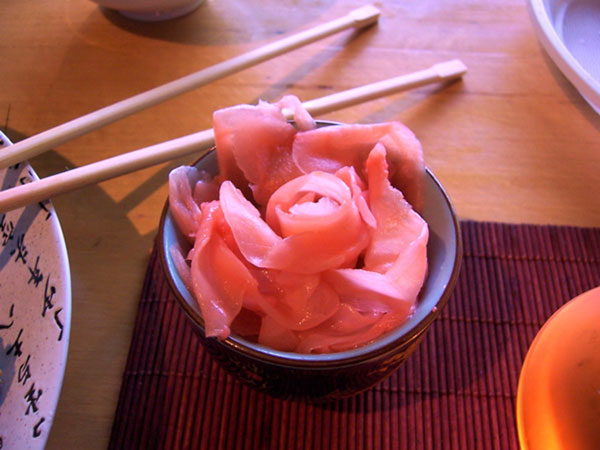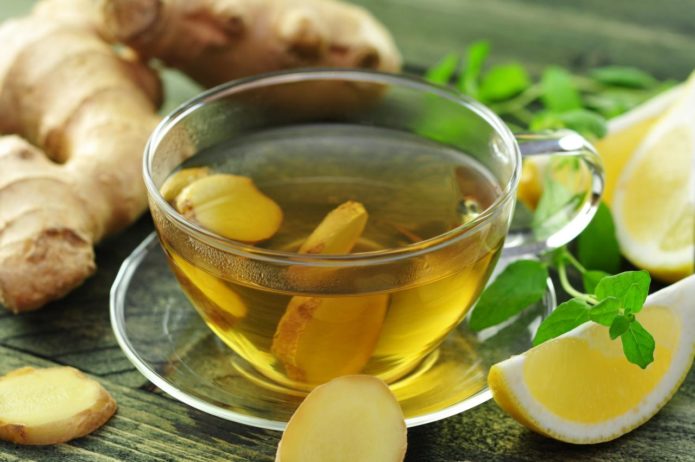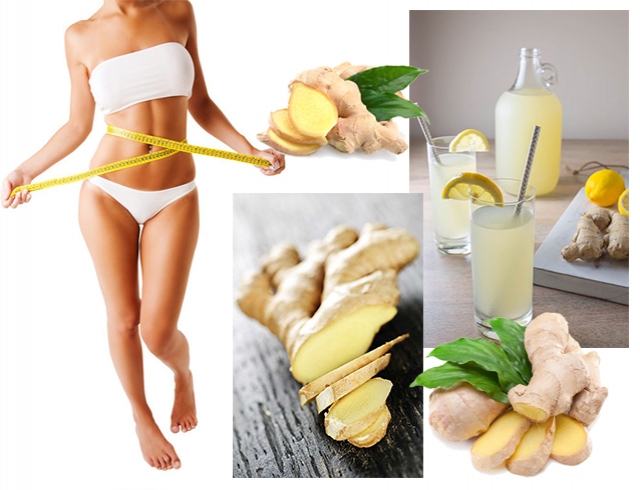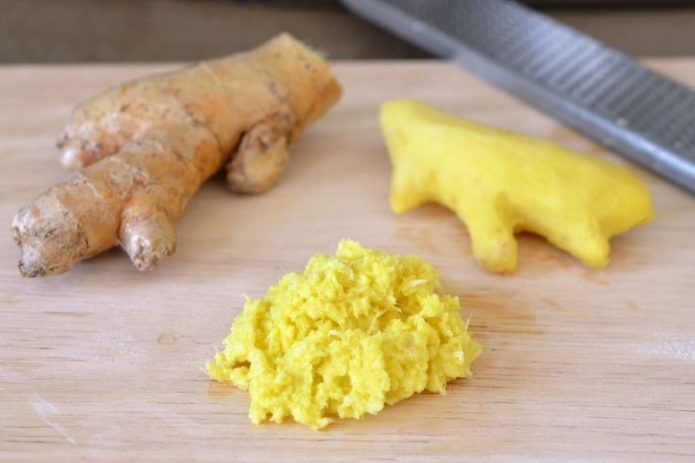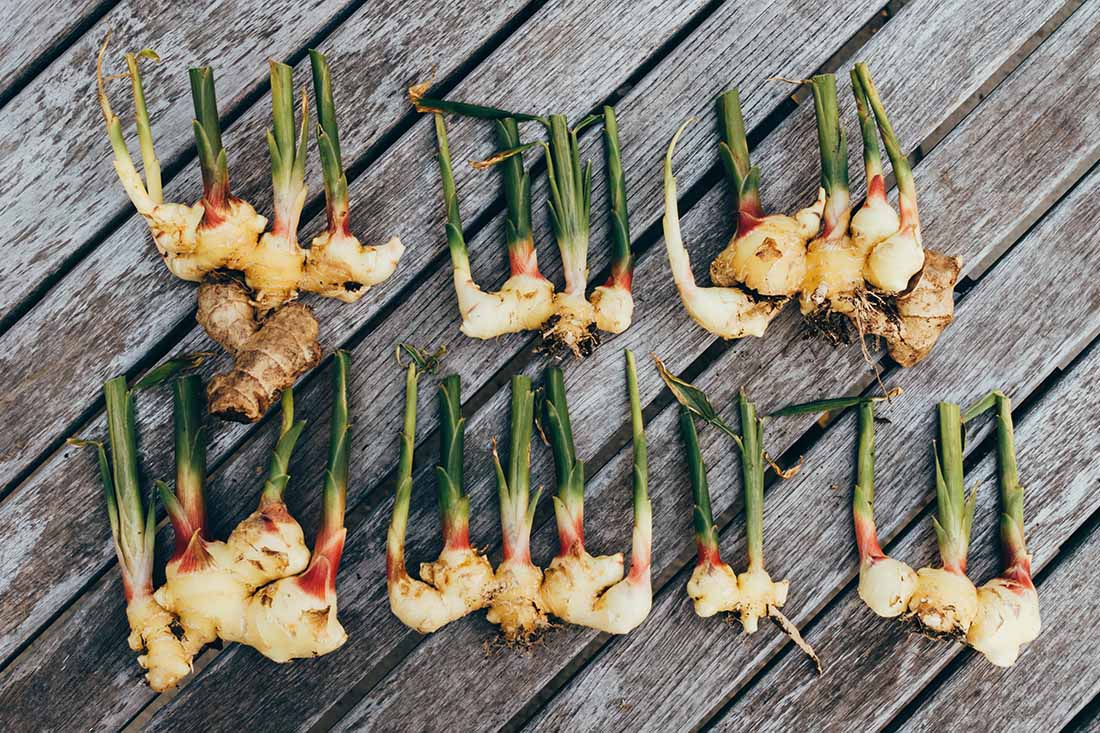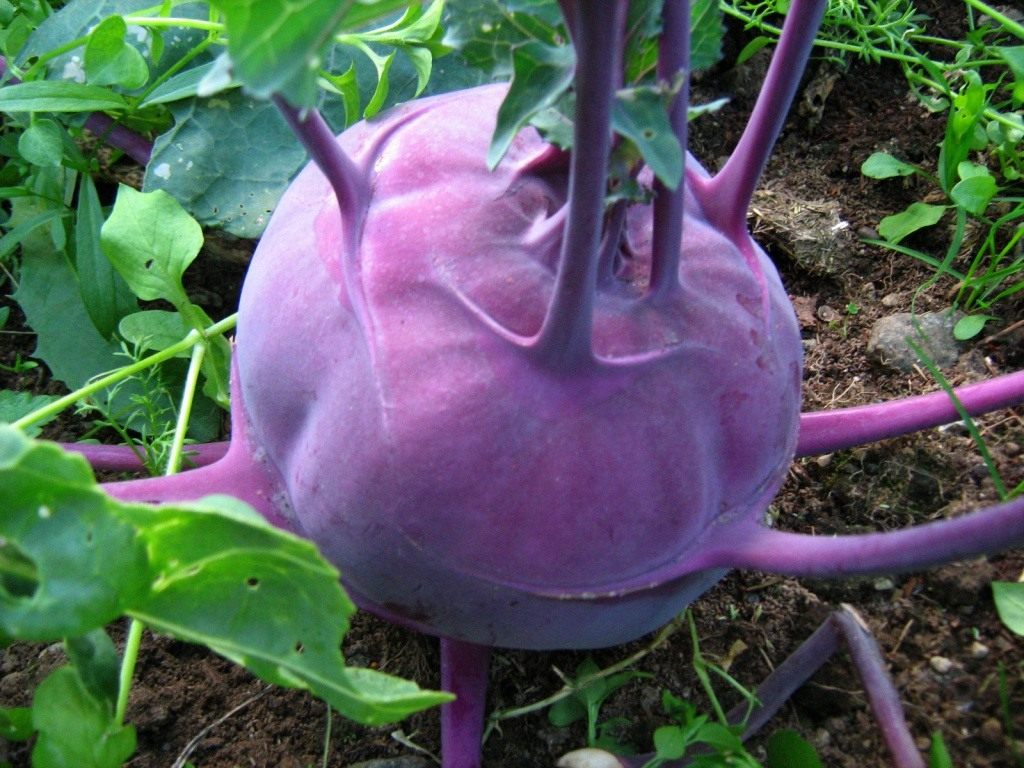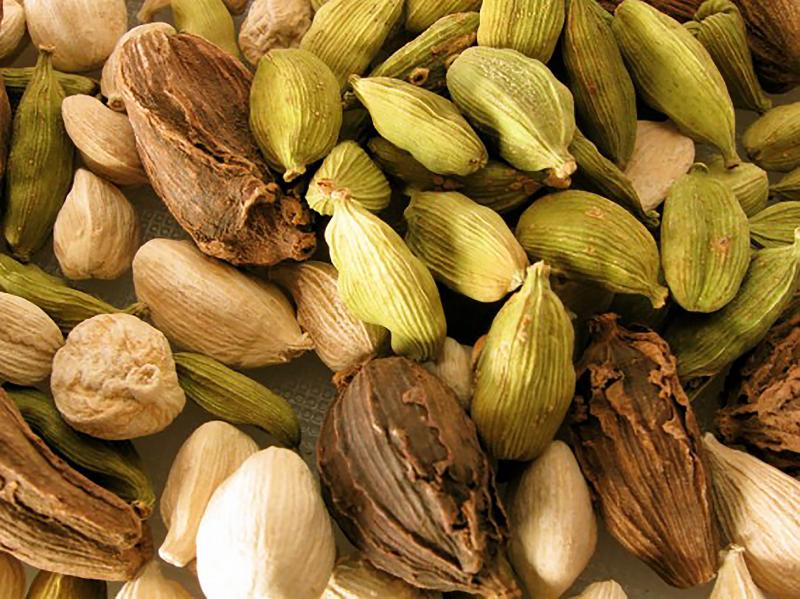Ginger is a plant known throughout the world. Its roots are eaten in many different recipes and cooking options. For many people, ginger is primarily associated with Asian cuisine. But in Russian this spice is given considerable attention. Ginger is traditionally a part of kvass, sbitn and other folk drinks, it is used in baked goods (for example, the famous Tula gingerbread cookies) and confectionery. Also, ginger has a beneficial effect on human health and is widely used in medicine. Every person who cares about their health should know how to use ginger, its beneficial properties and contraindications, as well as restrictions on the use of this plant in food.
Content
Chemical composition (table)
This table shows the chemical composition of the raw root. During heat treatment and other cooking methods, the composition changes somewhat - some minerals and vitamins become less, while others, on the contrary, more. But the similarities persist regardless of whether the spice has been dried, pickled, or canned.
What are the beneficial properties of ginger
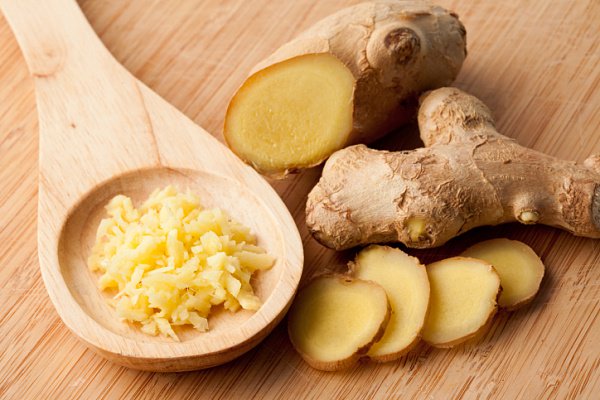
The famous Muslim scientist Ibn Sina (Avicenna) pointed out the miraculous properties of the plant in his book as early as 1016
The root of a plant is a multifunctional thing. He has 3 separate groups of useful properties at once:
- common - for all people;
- separately for women;
- separately for men.
It should also be borne in mind that during heat treatment and other types of preparation (conservation, pickling, drying), the characteristics of the plant change.
General benefit
The usefulness of ginger root is due to the presence of a large amount of vitamins and minerals. Due to its rich composition, this spice has the following properties:
- relieves fever and nausea with colds and diseases of the ARVI group (but at temperatures above 38 degrees, ginger should not be consumed);
- reduces nausea and discomfort with toxicosis, postoperative syndrome, chemotherapy, seasickness;
- lowers cholesterol levels, interferes with blood clotting and improves blood circulation;
- cleans the arteries, thanks to which it is used to prevent strokes and heart attacks;
- strengthens bones and cartilage, fights inflammatory processes in the joints;
- relieves muscle swelling and a feeling of fatigue;
- interferes with the development of viruses and bacteria of respiratory diseases;
- has an expectorant and diaphoretic effect, which makes it useful for many different diseases.
Video: Ginger, beneficial properties
Benefits for women
For the fair sex, ginger is very useful because it:
- effectively combats the physical signs of aging of the body (wrinkles, cellulite and much more);
- reduces pain and cramps during the menstrual cycle;
- promotes weight loss, increases the efficiency of diets and sports, helps to eliminate toxins and toxins during weight loss;
- successfully copes with migraines and dizziness.
The benefits of the spice during pregnancy deserve special attention. The root of this plant reduces dizziness and toxicosis during pregnancy, and has an antiemetic effect. But in the later stages, after 18-20 weeks, you should refrain from eating ginger. In addition, when breastfeeding, it must be taken very carefully - it is safe for the mother, but it can harm the baby's body.
Properties for men
Even the name itself speaks of the huge benefits of the plant for the stronger sex. In Chinese, ginger means masculinity. It is extremely beneficial for men because:
- enhances potency (this is inextricably linked with the improvement of blood circulation, which we talked about earlier);
- increases male strength and gives confidence (while it is not the ginger root itself that is especially effective, but ginger oil);
- effectively fights inflammation of the prostate gland (prostatitis).
Benefits and harms during heat treatment and with different cooking methods
Ginger has different properties in different states. Of course, the raw root is most useful, but eating it is not pleasant enough. Unless you chew and spit out a small piece, as is often done to relieve nausea.
Features of ginger prepared in different ways are as follows:
- The pickled product retains all vitamins and minerals, so it is almost as healthy as it is raw. In addition, the marinating process reduces the calorie content of the product. This makes the spice the best choice for people looking to lose weight. But with stomach ulcers and other diseases of the gastrointestinal tract, pickled ginger cannot be used, because its spicy taste is further aggravated by the sharpness of the marinade.
- Canned ginger is almost the same as pickled ginger. The only difference is that conservation implies harvesting for future use, and after a few months, some of the beneficial properties disappear. This also applies to other products. But of course, they do not become harmful from this.
- Dried ginger also successfully retains all the features of the "original". This applies to both whole roots and ground into powder. It is in the dried form that the spice is used as a seasoning, and is also added to medicines. But if you abuse dried ginger, then there is a risk of heartburn and irritation of the larynx.
- Ginger tea is one of the most popular ways to prepare the root. This drink retains all the beneficial properties of the plant, but in the process of infusion, they "move" from ginger to the tea itself. Therefore, there is a product from which the drink was made, it makes no sense - there is almost nothing left in it. You can also add sugar, honey and lemon juice to ginger tea to taste - this does not harm in any way. This cooking method is most effective against colds and respiratory infections.
- Ginger vodka tincture is another way to extract its beneficial properties from this plant. As in the case of tea, the root itself can be thrown away after infusion. Its benefits are transferred to the vodka on which it was infused. This "drug" is especially useful for colds and diseases of the ARVI group, as well as for the normalization of the nervous system.
- Ginger juice is a real concentrate of beneficial properties. 1 teaspoon of salted juice mixed in 100 ml of water can replace a whole bowl of pickled root. But the juice should be taken in small quantities, and be sure to dilute with water. In addition, the juice is contraindicated in diseases of the digestive system.
Heat treatment "kills" a significant portion of the beneficial trace elements in ginger. Therefore, it is usually pickled and canned "cold". The marinade, according to the recipe, is brought to a boil so that the product is better saturated with it, but the roots themselves are not boiled or exposed to prolonged heating.
What are the contraindications
Like most foods, ginger has several contraindications to eating. People with the following diseases should refrain from using spices:
- stomach ulcer and gastritis (however, people with these diagnoses should not eat not only ginger, but also spicy foods in principle);
- stones in the gallbladder;
- fever, high temperature (above 38 degrees);
- tendency to heartburn or hiccups;
- cirrhosis of the liver, hepatitis in acute and chronic form;
- burns;
- chronic diarrhea, hemorrhoids;
- late pregnancy.
Important! Ginger should be eliminated from the diet of young children - at least 3 years of age. For children from 3 to 7 years old, the product can already be given, but in very small quantities and necessarily as part of a dish, and not raw.
There are cases in which the product is not strictly prohibited, but it can only be used in small quantities:
- heart problems (ginger can briefly disrupt the rhythm of the heartbeat, which is absolutely safe for a healthy person, but can harm the patient);
- diseases of the digestive system (except for ulcers and gastritis, in which the root of the plant is strictly prohibited);
- insomnia (the spice has an invigorating effect, therefore it is not recommended for insomnia);
- hypersensitivity of the skin and its diseases (psoriasis, dermatitis, etc.);
- tendency to allergic reactions to food;
- preparation for surgery (especially if the surgery involves internal organs and the digestive system).
Finally, it should be remembered that from the abuse of spicy and spicy foods, irritation of the laryngeal mucosa can occur. This happens not only with ginger, but also with hot peppers, onions, garlic, and many other spices.
How to use the root correctly
To "squeeze" the maximum benefit from this spice and avoid harm, it is necessary to be guided by the norms of product use. The following will indicate measures for healthy people who have no contraindications to ginger. Obviously, when entering the "risk group" dosages should be significantly reduced.
Table of norms for the use of products and derivatives of ginger root
| Method of use | Daily rate |
| Dry ginger | no more than 4 g |
| Pickled and canned ginger | no more than 30 g |
| Ginger tea | no more than 2 l |
| Ginger juice | no more than 5 ml (1 teaspoon) |
Nuances of use
There are groups of people for whom the nuances of using ginger differ in one way or another:
- pregnant women;
- nursing mothers;
- women and men who are on a diet or seeking to lose weight;
- children;
- people with certain diseases (oncology, diabetes, pancreatitis, prostatitis, etc.).
During pregnancy
Pregnant women should treat the product with extreme caution:
- The daily rate must be reduced by 2 times in comparison with the norms for healthy people indicated above. So, pregnant women should not consume more than 2 g of dry and more than 15 g of pickled ginger.
- From 18 to 20 weeks of gestation, many foods should be avoided entirely. Their list includes everything hot and spicy, including ginger root.
- Ginger tea is most effective for pregnant women. You can drink it a lot - about 1 liter per day. This drink allows you to strengthen the immune system and get rid of unpleasant symptoms of pregnancy, such as toxicosis.
Tea is the best way to consume ginger during pregnancy.But if you don't like the taste of the drink, then you can use a spice marinated in a "sparing" brine - without vinegar and bitter pepper.
When breastfeeding
Ginger is generally not contraindicated for mothers who are breastfeeding. But there are many limitations that cannot be ignored:
- Before the baby is 3 months old, the root cannot be consumed at all. If this prohibition is violated, then an allergic reaction in infants is almost inevitable.
- After 3 months, you can start eating the spice, but in small portions (up to 10 g of pickled tea, up to 1 liter of tea per day) and strictly in the first half of the day. Best of all - before lunch. This use of the spice helps to increase lactation.
- After the introduction of ginger into the diet of a young mother, one should observe the changes in the child's body. The appearance of a rash, red cheeks, loose stools - all this is a signal that the use of spices should be stopped.
- If after childbirth the woman has bleeding (for example, hemorrhoids), then the product should also be discarded.
As with pregnancy, ginger is best consumed as a tea during breastfeeding. This drink retains the beneficial properties of the root, but is less "potent" and, as a result, safer.
For dieting and losing weight
The root of the plant has long been known to help you lose weight. Of course, you shouldn't just expect any miraculous effect from consumption: to achieve impressive results, you need to combine it with proper nutrition, diet and exercise. But still, ginger is irreplaceable during weight loss:
- The main idea of using for weight loss is the ability of the spice to stimulate thermogenesis. The root of this plant enhances the production of heat by the body, due to which excess energy is spent, excess calories are lost faster.
- If a person's excess weight is associated with constant stress, this means that the body has an increased level of the hormone cortisol. This hormone rises with anxiety and excitement, slows down the breakdown of fats and converts fats into "reserves." Ginger can suppress the cortisol rampage and calm the nerves, so in cases of frequent stress it is a must.
- Ginger alone will not help you lose weight. As a maximum, it can reduce the rate of weight gain. The key properties of the plant are manifested in the event that a person, after using it, went for a run or went in for fitness.
By the way, ginger has another interesting property that helps you lose weight. Used in any form, this spice can reduce appetite. If you add it to a dish as a spice, then the portion that is required for saturation will be much smaller.
For children
For children, the plant is very useful as an anti-cold and antibacterial agent. The child can be given ginger tea, small amounts of raw and dry product (up to 2 g per day), and also add root powder to food as a seasoning. But the following nuances must be observed:
- Up to 3 years, this product is generally contraindicated. It can cause irritation of the mucous membranes and problems with the immature gastrointestinal tract, resulting in diarrhea and heartburn.
- A child between the ages of 3 and 7 should not be given raw or dry ginger. Better to brew the tea and use the root powder as a spice.
- Before you start giving your child a spice, you need to consult a pediatrician. This must be done, even if the child is already 7 years old - no one is immune from the individual reactions of the body. Such consultation is recommended not only for ginger, but also for any other spices.
Ginger for disease. Healthy recipes
In some diseases, the root is strictly contraindicated. Their list has already been given above, in the section on contraindications.But people sometimes try to self-medicate, which only aggravates their health problems. In particular, some are trying to treat pancreatitis with this product, although this is real madness. Pancreatitis, stomach ulcers and other diseases of the gastrointestinal tract mean a strict ban on the use of ginger in food.
The plant is not recommended for group 1 diabetes mellitus either. But with diabetes of the 2nd group, the product is not only allowed, but also useful. It allows you to achieve positive dynamics of the disease and controls the glycemic process. Also, with diabetes, there are often complications in the eyes (for example, cataracts), and ginger is known as a good remedy for improving vision. But it is strictly not recommended to combine the spice with tablets to lower the sugar level - hypoglycemia may begin.
Common recipes for using ginger in group 2 diabetes mellitus:
- Take a small root, peel and soak in warm water for 1 hour. After that - grate on a fine grater and transfer to a thermos. Pour hot water over the mass at the rate of 1 liter for 1–2 g of product. Insist at least 6 hours. It is best to drink this tincture, adding it to black or herbal tea to taste. It should be consumed 3 times a day, about 30 minutes before meals.
- Rub the ginger root on a fine grater, wrap in cheesecloth or bandage and squeeze carefully. Collect the juice and leave in a dark place (you can also put it in the refrigerator). Drinking juice for group 2 diabetes is necessary in small quantities - no more than 1 ml per day. Measure with a pipette so you don't be mistaken.
Ginger is also widely used for cancer. Its secret is the ability to slow down the development of malignant cells and even act destructively on them. Here are some good recipes that can reduce inflammation and fight various types of cancer:
- This recipe is universal against malignant tumors. Take 2 large roots, peel, cut into small pieces. Add the spice to 450 g of honey, mix thoroughly. Close the airtight lid and leave in a dark place for 2-3 days so that the honey is well infused. Take 1 tablespoon 3 times a day.
- The following recipe is especially good for cancer of the lungs, bladder and prostate. Take 120 g each garlic and ginger (raw or pickled). Crush the garlic, and grate the root or chop into small pieces. Then - place both ingredients in a blender, add 1–2 tablespoons of olive oil and grind until smooth. Eat 1 tablespoon of this paste a day - it will be an excellent seasoning for many dishes.
Important! Ginger is not recommended for stomach cancer. First, you need to consult with your doctor, and if he allows the use of spices, then it will be necessary to observe the dosages indicated by the doctor.
Recent studies show that with the use of ginger, there is a positive trend in prostatitis and prostate tumors. Cure symptoms were found in 56% of the subjects. Scientists associate this phenomenon with the ability of ginger to reduce inflammation and slow the development of malignant cells in the body.
Ginger root is a very healthy product. Its beneficial properties were discovered by mankind more than 2 thousand years ago. It helps to effectively fight a number of various diseases, has a healing effect on the body, and supplies it with useful minerals and vitamins. But as with any medicine, ginger should be handled with care. If you take into account the peculiarities of its use and do not neglect contraindications, then the health benefits will be simply enormous.
